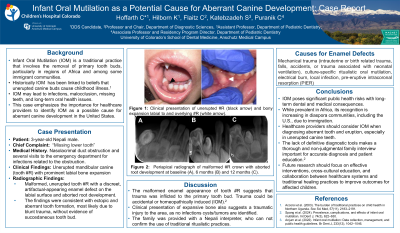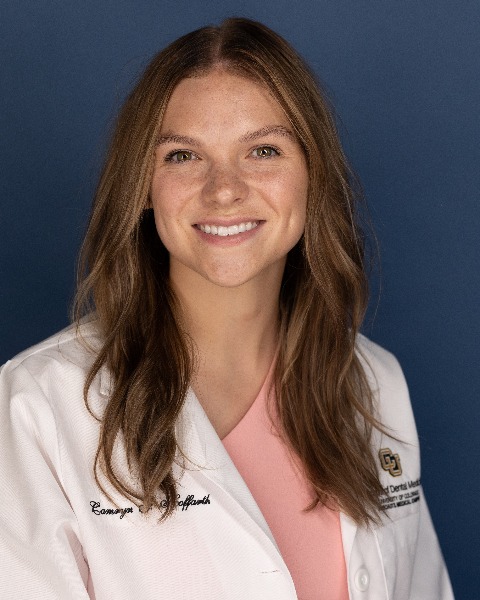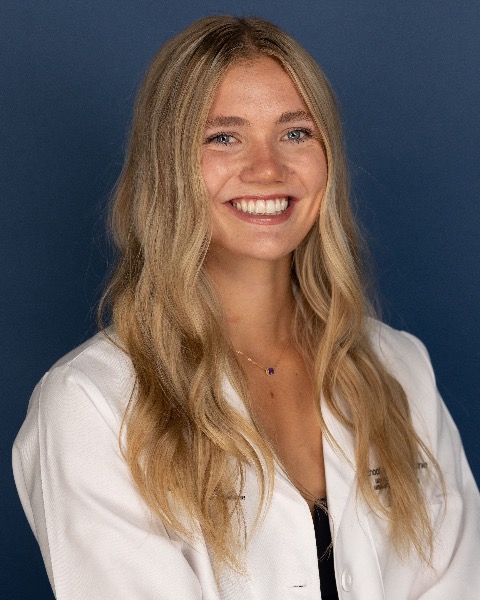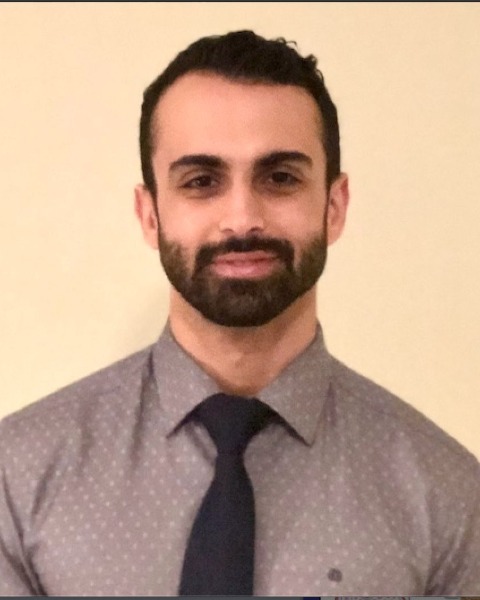Trauma
295 - Infant Oral Mutilation: Potential Cause for Aberrant Canine Development


Camryn G. Hoffarth, DDS Candidate (she/her/hers)
Dental Student
University of Colorado School of Dental Medicine
University of Colorado SDM
Denver, Colorado, United States
Camryn G. Hoffarth, DDS Candidate (she/her/hers)
Dental Student
University of Colorado School of Dental Medicine
University of Colorado SDM
Denver, Colorado, United States
Kamden Hilborn, DDS candidate
Student
University of Colorado
University of Colorado School of Dental Medicine
Clancy, Montana, United States
Shahbaz Katebzadeh, M.S., D.M.D
Resident
Children's Hospital Colorado
Aurora, Colorado, United States
Chaitanya P. Puranik, B.D.S., M.S., M.Dent.Sci., Ph. D. F.A.A.P.D., Diplomate (he/him/his)
Residency Program Director
Children's Hospital Colorado
Children's Hospital Colorado and School of Dental Medicine, University of Colorado Anschutz Medical Campus
Aurora, Colorado, United States- CF
Catherine M. Flaitz, DDS, MS
Professor and Chair, Diagnostic Sciences; Adjunct Pediatric Dental Faculty
University of Colorado School of Dental Medicine, Aurora, CO
Aurora, Colorado, United States - CF
Catherine M. Flaitz, DDS, MS
Professor and Chair, Diagnostic Sciences; Adjunct Pediatric Dental Faculty
University of Colorado School of Dental Medicine, Aurora, CO
Aurora, Colorado, United States 
Chaitanya P. Puranik, B.D.S., M.S., M.Dent.Sci., Ph. D. F.A.A.P.D., Diplomate (he/him/his)
Residency Program Director
Children's Hospital Colorado
Children's Hospital Colorado and School of Dental Medicine, University of Colorado Anschutz Medical Campus
Aurora, Colorado, United States
Presenting Author(s)
Co-Author(s)
Research Mentor(s)
Program Director(s)
Introduction: Aberrant tooth development has many causes and infant oral mutilation (IOM) is an important consideration. This traditional healing practice involves the removal of unerupted primary tooth buds, especially mandibular canines to treat childhood illnesses.
Case report: A three-year-old Nepali male presented with an unerupted mandibular canine (tooth #R) with prominent labial bone expansion. Radiographs revealed a malformed, unerupted tooth #R with a discreet, artifactual-appearing enamel defect on the labial surface and aborted root development. The findings were consistent with ectopic and aberrant tooth formation, most likely due to blunt trauma. The succedaneous tooth bud was not observed. No history of oral trauma or infection was elicited. Medical history included nasolacrimal duct obstruction and several visits to the emergency department for infections.
Conclusion: IOM is a global public health issue and should be considered when there is aberrant canine development in children who have emigrated to the United States.
Identify Supporting Agency and Grant Number:

.jpg)